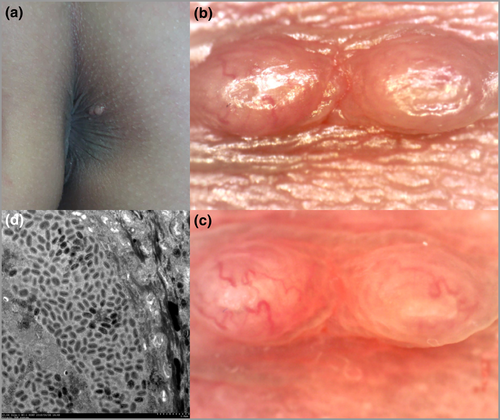Image Gallery: Dermoscopy of perianal molluscum contagiosum in a child caused by molluscum contagiosum virus subtype I
Dear Editor, An 8-year-old girl presented with flesh-coloured, umbilicated papules around the perianal region for 20 days (a). She went swimming but had no history of sexual abuse. Dermoscopy (JD801G) demonstrated smooth, shiny clods, reddish surface and coronary vessels without orifice under nonpolarized and polarized light resembling ‘swimming goggles’ (b, c; original magnification × 40). Molluscum contagiosum virus (MCV) subtype I (GenBank MH886528) was identified using polymerase chain reaction-based sequence analysis.1 Transmission electron microscopy showed dense mature viral particles and the core surrounded by an electron-transparent halo (d). MCV subtype I, commonly seen in children but quite uncommon in the perianal region, is likely to be transmitted via swimming pools or autoinoculation of pox virus.2

Acknowledgments
We thank the patient's parents for granting permission to publish this information.




